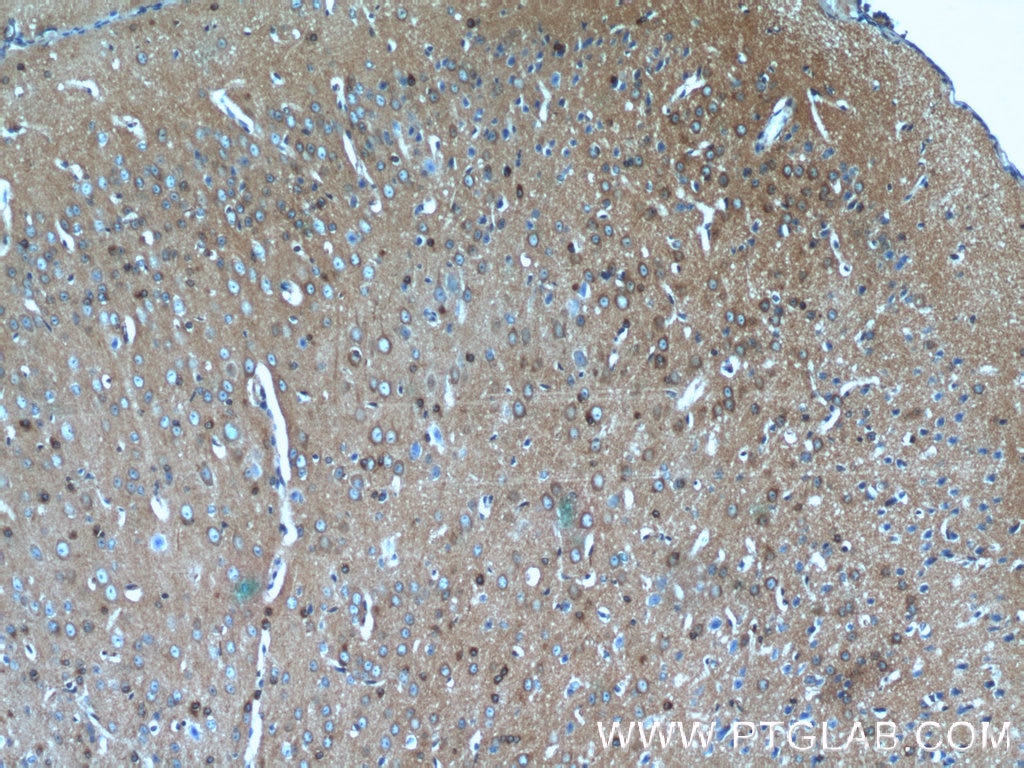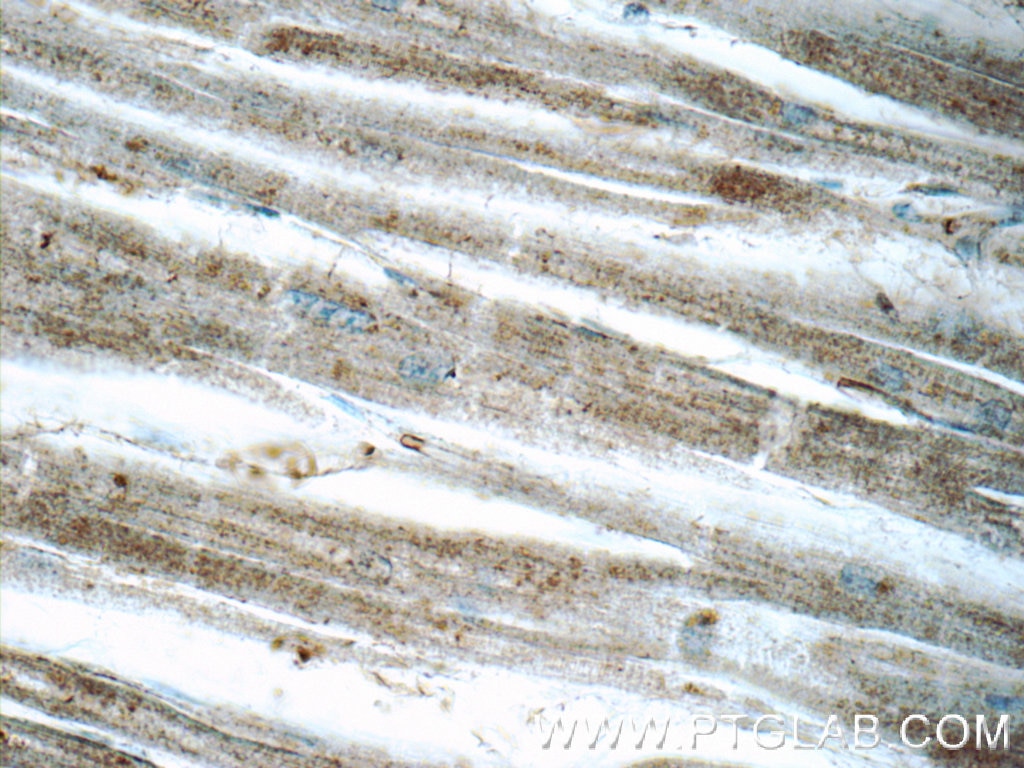- Phare
- Validé par KD/KO
Anticorps Polyclonal de lapin anti-CRMP4
CRMP4 Polyclonal Antibody for WB, IHC, ELISA
Hôte / Isotype
Lapin / IgG
Réactivité testée
Humain, rat, souris
Applications
WB, IF, IHC, ELISA
Conjugaison
Non conjugué
N° de cat : 13661-1-AP
Synonymes
Galerie de données de validation
Applications testées
| Résultats positifs en WB | tissu cérébral de souris, tissu cérébral de rat |
| Résultats positifs en IHC | tissu cérébral de souris, tissu cardiaque humain il est suggéré de démasquer l'antigène avec un tampon de TE buffer pH 9.0; (*) À défaut, 'le démasquage de l'antigène peut être 'effectué avec un tampon citrate pH 6,0. |
Dilution recommandée
| Application | Dilution |
|---|---|
| Western Blot (WB) | WB : 1:1000-1:5000 |
| Immunohistochimie (IHC) | IHC : 1:20-1:200 |
| It is recommended that this reagent should be titrated in each testing system to obtain optimal results. | |
| Sample-dependent, check data in validation data gallery | |
Applications publiées
| KD/KO | See 1 publications below |
| WB | See 4 publications below |
| IHC | See 2 publications below |
| IF | See 1 publications below |
Informations sur le produit
13661-1-AP cible CRMP4 dans les applications de WB, IF, IHC, ELISA et montre une réactivité avec des échantillons Humain, rat, souris
| Réactivité | Humain, rat, souris |
| Réactivité citée | rat, Humain, souris |
| Hôte / Isotype | Lapin / IgG |
| Clonalité | Polyclonal |
| Type | Anticorps |
| Immunogène | CRMP4 Protéine recombinante Ag4557 |
| Nom complet | dihydropyrimidinase-like 3 |
| Masse moléculaire calculée | 570 aa, 62 kDa |
| Poids moléculaire observé | 60-70 kDa |
| Numéro d’acquisition GenBank | BC039006 |
| Symbole du gène | CRMP4 |
| Identification du gène (NCBI) | 1809 |
| Conjugaison | Non conjugué |
| Forme | Liquide |
| Méthode de purification | Purification par affinité contre l'antigène |
| Tampon de stockage | PBS avec azoture de sodium à 0,02 % et glycérol à 50 % pH 7,3 |
| Conditions de stockage | Stocker à -20°C. Stable pendant un an après l'expédition. L'aliquotage n'est pas nécessaire pour le stockage à -20oC Les 20ul contiennent 0,1% de BSA. |
Informations générales
DPYSL3(Dihydropyrimidinase-related protein 3) is also named as CRMP4, DRP3, ULIP, ULIP1 and belongs to the hydantoinase/dihydropyrimidinase subfamily.DPYSL3 is a developmentally regulated protein, strongly expressed in early embryonic post-mitotic neural cells, reaching a peak of expression around the first post-natal week. In the adult brain, DPYSL3 is present mainly in regions that retain neurogenesis.DPYSL3 protein is also found in synaptic sites at the adult neuromuscular junction where it may be involved in the maintenance of neuronal stability(PMID: 16135096).It has 2 isoforms produced by alternative splicing.
Protocole
| Product Specific Protocols | |
|---|---|
| WB protocol for CRMP4 antibody 13661-1-AP | Download protocol |
| IHC protocol for CRMP4 antibody 13661-1-AP | Download protocol |
| Standard Protocols | |
|---|---|
| Click here to view our Standard Protocols |
Publications
| Species | Application | Title |
|---|---|---|
Mol Neurobiol Collapsin response mediator protein 5 (CRMP5) modulates susceptibility to chronic social defeat stress in mice. | ||
Neuropharmacology Collapsin response mediator protein 5 (CRMP5) causes social deficits and accelerates memory loss in an animal model of Alzheimer's disease. | ||
Cancer Biol Ther CRMP4a suppresses cell motility by sequestering RhoA activity in prostate cancer cells.
| ||
Int J Mol Sci Elevated Hippocampal CRMP5 Mediates Chronic Stress-Induced Cognitive Deficits by Disrupting Synaptic Plasticity, Hindering AMPAR Trafficking, and Triggering Cytokine Release | ||
Cell Rep Med Bone transport induces the release of factors with multi-tissue regenerative potential for diabetic wound healing in rats and patients |






